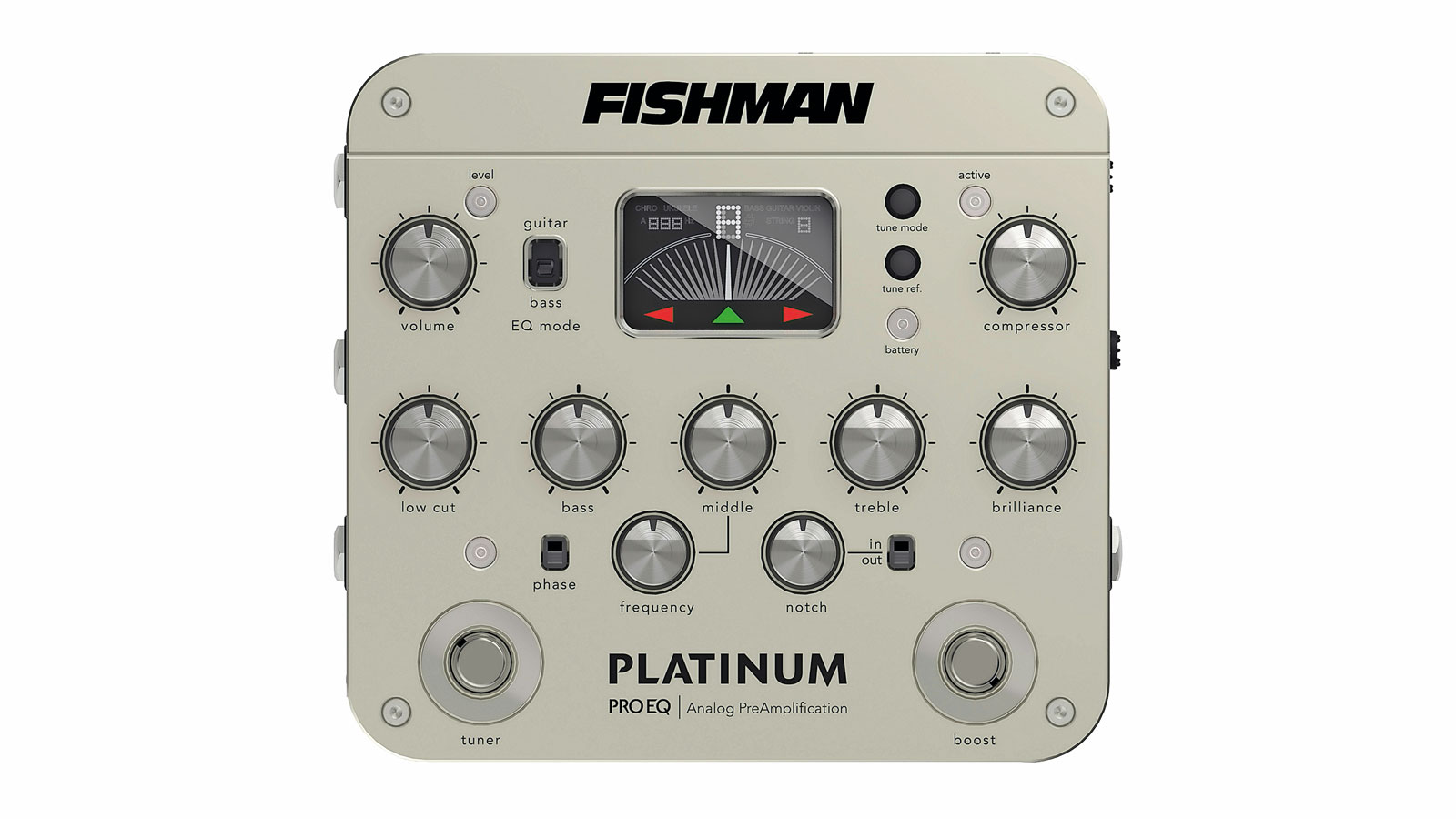MusicRadar Verdict
Superbly considered preamp plus for the gigging acoustic player.
Pros
- +
Exceptional preamp sounds. Compression, boost and feedback control. Built-in tuner.
Cons
- -
LCD screen could be brighter.
MusicRadar's got your back
There's little doubt that the ongoing trend for electro acoustics is to have as few as possible onboard controls: for many, the side-mounted preamp panel is an antique.
Yet us stage-aiming acoustic players still need some help, and the outboard preamp is becoming more essential. Fishman is no stranger to acoustic amplification, and the Platinum Pro EQ is one of three outboard preamps it introduced in 2014.
"Bass, mid, treble and brilliance all have central 'flat' notch positions and work very well, offering musical EQ"
It certainly crams a lot into its 153mm by 142mm footprint. The single jack input, with its side-mounted input trim control, allows you to set your best level, and to the right of the volume control there's an LED input monitor.
The volume control affects the overall output from the standard jack out, plus we have an XLR DI out - with a pre or post switch.
In terms of EQ it's carefully considered with treble, bass and sweepable midrange augmented by low cut and brilliance controls.
A guitar/ bass switch alters the frequency centres to suit either - unlike the similar LR Baggs Venue DI, which is very guitar-specific, this preamp is designed for any acoustic instrument, from bass to violin, uke to mandolin.
Along with this, we have a single-knob analogue compressor (with LED active indicator), as well as a tuner that offers a chromatic and four instrument modes and is engaged by the left-hand footswitch.
Want all the hottest music and gear news, reviews, deals, features and more, direct to your inbox? Sign up here.
The right-hand footswitch engages a level boost, which can be preset via another side-mounted control from 3 to 12dB. We then have both a phase switch and viable notch filter to tackle feedback issues, oh, and an effects loop should you want the Platinum Pro to be the 'brain' of a larger set-up.
Power comes from a 9V mains adaptor or a block battery - neither of which are supplied.
In Use
Engaging the tuner mutes the output, so it's not only ideal for its main purpose, but also when you're plugging in/unplugging.
"If you're serious about your live sound, this is an exceptional preamp"
It's not the brightest LCD screen we've seen and the red flat/sharp arrows are at the bottom of the display, so you really need to be on top of it to tune accurately.
Bass, mid, treble and brilliance all have central 'flat' notch positions and work very well, offering musical EQ, and unless set stupidly it's hard to get a bad sound.
That brilliance control really helps reduce finger noise from nylon strings or that often ear-wearing hi-fi edge of so many modern pickup systems. Equally handy is the low cut - a high-pass filter that is really useful with bigger PAs and passive pickups.
Along with this efficient EQ, the compression certainly helps fingerstyle, while the level boost is very handy for solos or quieter passages if you're playing in any kind of band setting.
If you're serious about your live sound, this is an exceptional preamp that allows you to dial in your sound, compress and boost it, and sort your feedback. LR Baggs' Venue DI finally has a competitor.
Dave Burrluck is one of the world’s most experienced guitar journalists, who started writing back in the '80s for International Musician and Recording World, co-founded The Guitar Magazine and has been the Gear Reviews Editor of Guitarist magazine for the past two decades. Along the way, Dave has been the sole author of The PRS Guitar Book and The Player's Guide to Guitar Maintenance as well as contributing to numerous other books on the electric guitar. Dave is an active gigging and recording musician and still finds time to make, repair and mod guitars, not least for Guitarist’s The Mod Squad.

